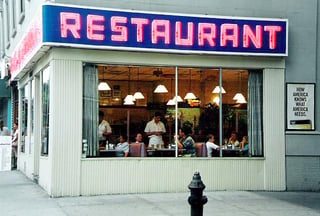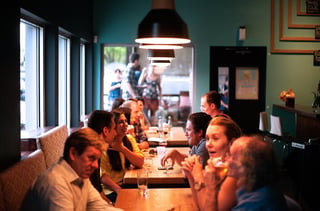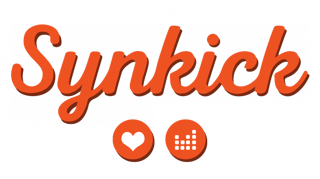The Internet of Things has seen a dramatic rise over the past few years with items like the Nest by Google, Hue light bulbs by Philips, and the Garageio WiFi-connected garage door opener. Smart restaurant owners have jumped on the IoT bandwagon by adopting internet-connected devices to monitor food preparation, lighting, and shift-scheduling.

With 57% of restaurants failing within the first 3 years of opening (according to a recent Cornell University study,) it's time to quickly adopt even newer forms of IoT technology within the food service industry. Restaurants may not be able to afford to miss out on this wave. Here's a look at a few ways restaurateurs can quickly and easily join the movement, improving the restaurant environment and increase traffic all at the same time.
Simple Solutions to Enhance Customer Experience
One possibility is adding new forms of entertainment and engagement for guests — something restaurants have been addressing for years. As kids, we all remember begging our parents for nickels or quarters to go play games on the restaurants’ arcade machines. Applebee’s president Mike Archer has big plans to take that experience into the more mobile and digital world we live in through the use of iPads. Applebee’s plans to have 100,000 tablets at its restaurants’ tables by late 2015. These devices will allow the customer to not only play games, but also add additional food to their order themselves — a potential moneymaker from impulse purchases.
Future of Dining Experience is in Mobility
But, what's next? That is the question everyone is asking. What is the next thing that will come along that you as a restaurant owner should adopt? With a recent PEW study finding that 64% of adults have a smartphone in their pocket, clearly this is the obvious channel to leverage. It is time to take advantage of all of the many apps that have been created to cater to dining customers. These apps can make life easier and serve as the solution to a much better dining experience, leading to more repeat business and more word of mouth advertising. Here's a look at three mobile apps that can enhance customers' dining experience.
First up is a brand new smartphone application that lets customers find out how busy a restaurant, cafe or bar is before even leaving their home. Density wants to eliminate the problem of showing up to a restaurant during the dinner or lunch rush. Where Density pays dividends for restaurant management is by leveling out traffic throughout the day.
Instead of having one or two rushes that overwhelm staff and potentially lead to a decrease in quality of service, Density can provide a steady stream of customers throughout the day. It also puts the control in the consumers’ hands. This gives them the feeling of exclusivity by beating the common restaurant rushes with special insider information. As a restaurant owner, all you will need to do is have the Density door sensor installed — a process the Density claims takes less than 5 minutes.
Synkick is another fun new mobile app that, if you adopt it now, will put you on the cutting-edge of restaurant experience- and environment-management. The whole premise is that customers will be more comfortable, stay longer and thus, spend more money if they are helping to control the music inside a restaurant. When customers enter an establishment, their musical tastes will automatically be incorporated into the restaurant’s playlist. It harkens back to the jukebox days, but without any of the effort. Synkick also provides useful insights into your consumer behavior, which should pay huge dividends in helping owners understand target customers.
Finally, Cover is a mobile application that allows your customers to take control of the most awkward point in their restaurant experience: the check. We have all been apart of arguments over the check. Who is going to pay? How is it going to be split? There is also the problem of the server not noticing that the customers are done with their meal and it’s time to bring the check. Perhaps they’re in a hurry and need to pay quickly. That’s where Cover comes in. At any point in the dining experience, the customer can tell the server that they’ll be paying with Cover. Once they have finished the meal, they can open the Cover app, split the bill, choose the tip percentage and pay their check. They are then free to leave. It removes the back and forth between the server, the awkwardness of deciding who is going to pay, and the delay if a customer is in a hurry. (paywithcover.com)
Not If, But How Much
 The question for restauranteurs is not IF they should adopt Internet of Things technology into their restaurant experience; the question is HOW MUCH technology, what specific apps, and what your method should be for implementing them. It’s obvious that technology has already impacted how restaurants are run. There are also many cost-saving IoT and "smart" apps to control lighting, refrigeration, and food preparation.
The question for restauranteurs is not IF they should adopt Internet of Things technology into their restaurant experience; the question is HOW MUCH technology, what specific apps, and what your method should be for implementing them. It’s obvious that technology has already impacted how restaurants are run. There are also many cost-saving IoT and "smart" apps to control lighting, refrigeration, and food preparation.
With the rise of app-dependency in our society, there is always the fear that a restaurant could lose their personal touch. That is a challenge operators must be aware of as they push their restaurant forward into the 21st century. Managers must be careful to adopt new applications that increase your customer’s experience while also enhancing the personalized service they receive.
Have you used or experienced any new technology in a dining visit that enhanced the experienced? Thoughts on risks or challenges adopting IoT in restaurant services? Love to hear about it in the comments below.



